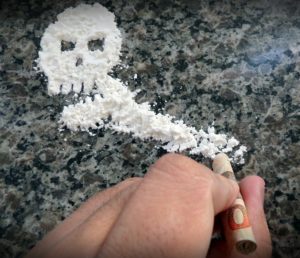The concept of addiction on a wide scale is nothing new, and will continue to happen for some time. Almost every time period in history has one or several drug epidemics. Over time, while healing has grown and improved, so have methods of finding and making medicine. The ability to find and make new medicines is obviously essential for our survival, but we’ve managed to make a whole new dangerous game in the creation of synthetic drugs. Syringes, too, changed both the medical and illicit drug economies, with more and stronger drugs pushed into thousands of bodies everyday. What’s interesting is that needles fine enough to be inserted through tissue is not new – the process had been developed in Ancient Greece. Cataracts could be treated with a needle sterilized over a hearth. The idea was lost, though, and re-invented in the 1800s.
Recreational drug use has been going on since at least the European Renaissance, but there is evidence to suggest that recreational drug use actually began in Asia, with historical records in India giving some insight. Apparently, around 1000 BCE, it was already common practice in India to have cannabis snacks at different local lodges. The Hindu tradition involved grinding the cannabis leaves into a powder, and filtering it through a variety of flavorings until it becomes something that can be easily added to food and drinks. The compound is called, Bhang, and it is alleged to be a great remedy for various physical ailments, as well as a sleep aid. Some sources suggest that humans and psychotropic plants have evolved together, creating a new and different type of symbiosis. While this could be a figment of someone’s imagination, it could also explain why synthetic drugs can be so incredibly destructive, and scary.
Opium
 Cannabis may have ruled India through Bhang, but cannabis was soon passed over for a far more potent drug: opium. Opium, which has been used for about 7,000 years, was first discovered in the Middle East, in and around present-day Iran and Afghanistan. There, poppies, the source of opium, can grow far, wide, and strong in the dry climate. It was here that opium was discovered, hiding in the boiled nectar of the flowers. Opium was found to be a powerful pain reliever as well as an effective laxative, and it was necessary to administer opium diluted with something else, often milk. As opium grew steadily more popular, two important things happened: first, a way was engineered to smoke opium, making the effects of the drug more quickly felt. Second, the ancient world’s most famous trading route, The SIlk Road, funneled the potent drug out of its home region, and sent it into nearly every country in Asia.
Cannabis may have ruled India through Bhang, but cannabis was soon passed over for a far more potent drug: opium. Opium, which has been used for about 7,000 years, was first discovered in the Middle East, in and around present-day Iran and Afghanistan. There, poppies, the source of opium, can grow far, wide, and strong in the dry climate. It was here that opium was discovered, hiding in the boiled nectar of the flowers. Opium was found to be a powerful pain reliever as well as an effective laxative, and it was necessary to administer opium diluted with something else, often milk. As opium grew steadily more popular, two important things happened: first, a way was engineered to smoke opium, making the effects of the drug more quickly felt. Second, the ancient world’s most famous trading route, The SIlk Road, funneled the potent drug out of its home region, and sent it into nearly every country in Asia.
Opium’s historical significance can’t be understated: it was the catalyst for China’s Opium Wars, an English wartime campaign that hinged on the growing population of Chinese people living with addiction to opium to finance the colonization of the country. By then, opium had already gripped Asia, and slowly began to move into Europe. Before war broke out in China, much of the opium in China had been smuggled in from neighboring India.
As these wars raged on, people elsewhere in the world continued to manipulate the compound. From opium was derive the first opiate, morphine, developed in a liquid form to treat pain. It was used throughout the American Civil War on the leagues of terrified young soldiers. Shortly after morphine entered the markets, heroin, a derivative of morphine, entered hospitals and other medical centers. Heroin, a more potent form of morphine, was used to treat severe pain that morphine couldn’t help. This usually happened after the ailing person developed a tolerance for other painkillers, including morphine.
Alcohol
Though its development and use post-dates opium, alcohol took over the world in a way that opium never did. Alcohol-related deaths number over three million worldwide every year. Early civilizations that developed alcohol initially utilized it as a painkiller, but also discovered that the flavor could be refined, and enjoyed. Wine and beer first appeared along the Mediterranean Sea, and grain alcohol first appeared in Northern India.
Alcoholism was a well-known social ill when the first colonizers arrived in the present-day United States in the 17th century. Because of this, temperance was required among some within the earliest settlements. As more and more people come over from Europe, though, the first taverns and fine wine popped up, and regularly serviced many people. With more people came the need for more land, and this forced a long string of ill-intentioned interactions with Indigenous nations. Part of winning more land involved introducing native leaders to alcohol, and convincing them to sign over their lands. Still another tactic was trading alcohol for valuable items, like pelts and food.
Amphetamines
Though the problem of alcoholism never went away, the last three decades has increasingly been about the newest worldwide drug epidemic: the Opioid Crisis. While opioids and their terrible effects have lawmakers and families hungry for a solution, people living with addiction to amphetamines are faring just as badly. Amphetamines are synthetic drugs that were originally synthesized in the middle of the 19th century. Shortly after their creation, though, they were effectively shelved, and it was rare that anyone chose to use them until the 1930s. Then, several armies were dosing soldiers a variety of different drugs to keep them awake and alert to fight. Methamphetamine, a product of amphetamine, was given to German and Japanese soldiers in tablet form. The trick worked – the soldiers were far more lively, and fought hard. The crash, though, was terrible. For days, sometimes weeks, at a time, soldiers were in pain, and listless. Other soldiers had a different experience: their increased alertness and energy made them aggressive, and those aggressions were taken out on those above rank, as well as the very civilians they were fighting to protect.
Meth still managed to enter the United States, but in the form of a diet tablet. After the addictive nature was discovered, it was pulled from shelves, and listed as a Schedule I narcotic by the federal government. Today’s meth epidemic began in the 1980s, when motorcycle gangs, intent on making money, turned to manufacturing meth.
Any and all of these drugs are highly addictive, and treatment is an option that can save a life.

